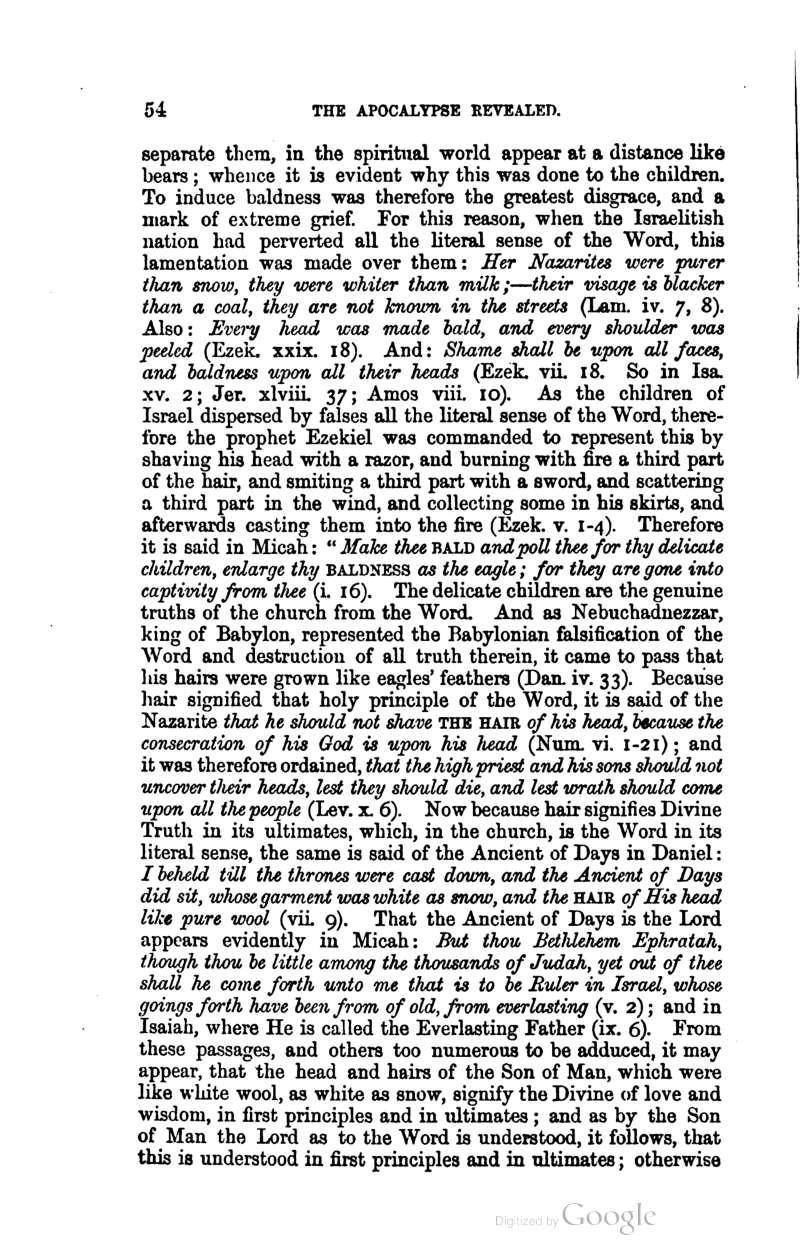Emanuel Swedenborg, in his commentary on Revelation, teaches that "the Ancient of Days is the Lord."
- Type
- Book
- Source
- Emanuel Swedenborg Non-LDS
- Hearsay
- Direct
- Reference
Emanuel Swedenborg, The Apocalypse Revealed in which are Disclosed the Mysteries there Foretold (London: Swedenborg Society, 1876), 54-55
- Scribe/Publisher
- Swedenborg Society
- People
- Emanuel Swedenborg
- Audience
- Reading Public
- Transcription
Now because hair signifies Divine Truth in its ultimates, which, in the church, is the Word in its literal sense, the same is said of the Ancient of Days in Daniel: I behld till the thrones were cast down, and the Ancient of Days did sit, whose garment was white as snow, and the HAIR of His head like pure wool (vii. 9). That the Ancient of Days is the Lord appears evidently in Micah: But thou Bethlehem Ephratah, though thou be little among the thousands of Judah, yet out of thee shall he come forth unto me that is to be Ruler in Israel, whose goings forth have been from of old, from everlasting (v. 2); and in Isaiah, where He is called the Everlasting Father (ix. 6). From these passages, and others too numerous to be adduced, it may appear, that the head and hairs of the Son of Man, which were like white wool, as white as snow, signify the Divine of love and wisdom, in first principles and in ultimates; and as by the Son of Man the Lord as to the Word is understood, it follows that this is understood in first principles and in ultimates; otherwise to what purpose would the Lord here in the Apocalypse, and the Ancient of days in Daniel, be described as to the hair?
- BHR Staff Commentary
Swedenborg believed that God the Father and the Son was the same person (a form of Modalism).
- Citations in Mormonr Qnas
The B. H. Roberts Foundation is not owned by, operated by, or affiliated with the Church of Jesus Christ of Latter-day Saints.

